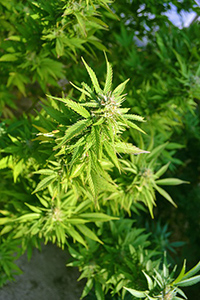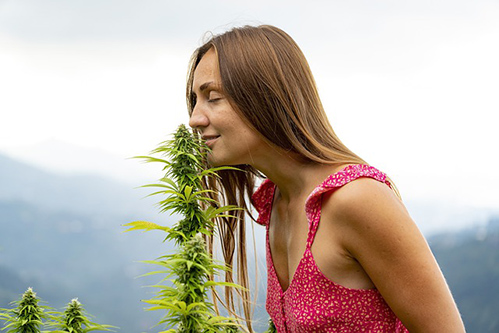Contents
Over the ages, the hemp plant has been grown to obtain textile fibers for ropes and fabrics. The drunkenness and mental disorders that the men working with hemp fibers suffered are also well-known. In the 19th century, the active elements responsible for its stupefacient effect were discovered. These products are more concentrated in various indica (Indian hemp).

Hemp Plant Scientific Facts

- Other names: Marijuana, pot, bhang, grass, marihuana, weed, Indian hemp.
- French: Chanvre.
- Spanish: Canamo.
- Environment: Native to Central Asia, its cultivation has been spread to humid and warm regions worldwide.
- Description: The Moraceae family’s Dioie plant (with male and female organs in separate plants) grows up to 1.5 meters high. The leaves are palm-shaped, divided into five or seven segments with a toothed edge. The flowers are greenish and gather in terminal bouquets.
- Parts of the plant used medicinally: Terminal flower bouquets and fruits (hempseed).
Healing Properties and Uses
The flower bouquets of the female hemp plant, especially those of the variety indica, produce a resin known as hashish, or marijuana, that contains cannabinol. The Arabic word hashashin, meaning hashish drinkers, is the origin of the word assassin (murderer or killer). The hashashin were members of a religious sect who, when they became members, vowed to kill any person their master ordered. Their crimes were usually committed under the effects of hashish.
Hashish is generally used as a joint: a cigarette made of tobacco and hemp or hashish, which produces euphoria and, in high doses, causes senselessness, hallucinations, and madness. Habitual smoking of joints causes loss of memory and will, besides atrophy of the sex organs, produce sterility and impotence.

The hemp plant has only one medicinal use: to ease neuralgia and rheumatic pain. It is externally applied as an alcoholic tincture made of leaves and flowers in massage or lotions. Its use is not recommended, given that cannabidiol may be absorbed even through the skin and provoke stupefacient effects. Other remedies lack toxicity and are equally effective.

However, the fruits are very appreciated by birds and cattle and do not contain cannabinol. They are used as an infusion (herbal tea) to decrease cholesterol in the blood.
How to use Hemp
- Infusion with a tablespoon of seeds, steeping for ten minutes. Drink two or three cups a day.
DISCLAIMER: All content on this website is presented solely for educational and informational objectives. Do not rely on the information provided as a replacement for advice, diagnosis, or treatment from a qualified medical expert. If you are pregnant, nursing, or have any preexisting medical concerns, talk to your doctor before using any herbal or natural medicines.
REFERENCES
- George D. Pamplona-Roger, M.D. “Encyclopedia of Medicinal Plants.” George D. Pamplona-Roger, M.D. Encyclopedia of Medicinal Plants. Ed. Francesc X. Gelabert. Vols. 1 San Fernando de Henares: Editorial Safeliz, 2000. 152. Print. [hemp plant]
- Purdue University. https://www.hort.purdue.edu/newcrop/ncnu02/v5-284.html
- Blessing, Esther M., et al. “Cannabidiol as a Potential Treatment for Anxiety Disorders.” Neurotherapeutics, vol. 12, no. 4, 2015, pp. 825–836. doi:10.1007/s13311-015-0387-1.
- Russo, Ethan B. “Cannabinoids in the management of difficult to treat pain.” Therapeutics and Clinical Risk Management, vol. 4, no. 1, 2008, pp. 245–259.
- Callaway, J. C. “Hempseed as a nutritional resource: An overview.” Euphytica, vol. 140, no. 1-2, 2004, pp. 65–72. doi:10.1007/s10681-004-4811-6.
- Babson, Kimberly A., James Sottile, and Danielle Morabito. “Cannabis, Cannabinoids, and Sleep: a Review of the Literature.” Current Psychiatry Reports, vol. 19, no. 4, 2017, p. 23. doi:10.1007/s11920-017-0775-9.
